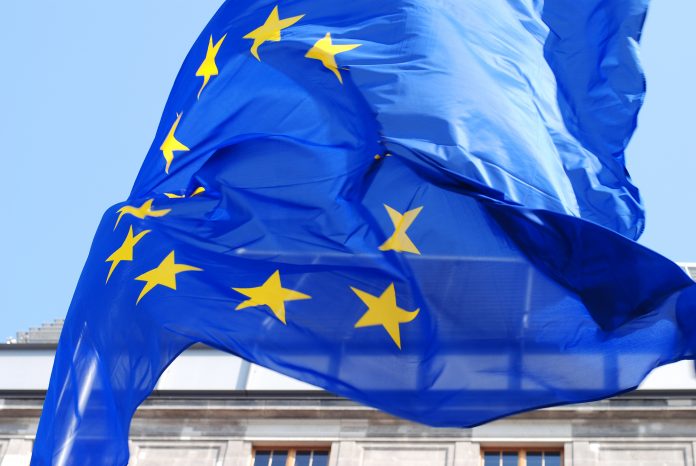Here, we discuss the freshly elected European Commissioners of the 2019-2024 period, including their duties and a vision of the EU their work could shape
The President of the European Commission is the first woman to hold the role, Ursula von der Leyen. Voted in on 16 July 2019, she is described by the Commission as a “European by heart and by conviction”, with an aspirational climate plan to make Europe the first climate-neutral continent by 2050.
Her Commission is gender-balanced, and she further urges her Commissioners to consider the talents of all in the EU regardless of race, sexuality and gender for the formation of their own cabinets.
In Leyen’s agenda for the future, she said:
“It is an aspiration of living in a natural and healthy continent. Of living in a society where you can be who you are, live where you like, love who you want and aim as high as you want. It is an aspiration of a world full of new technologies and age-old values. Of a Europe that takes the global lead on the major challenges of our times.”
With 200 million voters in 28 EU countries going to the polls to elect MEPs in May 2019 and the ongoing uncertainty of Brexit negotiations, the executive body of Europe has taken on a new level of significance. This Commission will sit from 2019 to 2024.
Today (10 September) she announced a list of new Commissioners, who are currently waiting to take their new posts.
Who are the new Commissioners?
Executive Vice-Presidents
- Valdis Dombrovskis, Latvian, An Economy that Works for People
- Frans Timmermans, Dutch, European Green Deal
- Margrethe Vestager, Danish, Europe fit for the Digital Age
Vice-Presidents
- Josep Borrell, Spanish, also High Representative, A Stronger Europe In the World
- Margaritis Schinas, Greek, Protecting our European Way of Life
- Maroš Šefčovič, Slovak, Interinstitutional Relations and Foresight
- Věra Jourová, Czech, Values and Transparency
- Dubravka Šuica, Croatian, Democracy and Demography
Commissioners
- Stella Kyriakides, Cypriot, Health
- Sylvie Goulard, French, Internal Market
- Paolo Gentiloni, Italian, Economy
- Phil Hogan, Irish, Trade
- László Trócsányi, Hungarian, Neighbourhood and Enlargement
- Helena Dalli, Maltese, Equality
- Janusz Wojciechowski, Polish, Agriculture
- Elisa Ferreira, Portugese, Cohesion and Reforms
- Didier Reynders, Belgian, Justice
- Rovana Plumb, Romanian, Transport
- Ylva Johansson, Swedish, Home Affairs
- Janez Lenarčič, Slovenian, Crisis Management
- Jutta Urpilainen, Finnish, International Partnerships
- Kadri Simson, Estonian, Energy
- Virginijus Sinkevičius, Lithuanian, Environment and Oceans
- Johannes Hahn, Austrian, Budget and Administration
- Mariya Gabriel, Bulgarian, Innovation and Youth
- Nicolas Schmit, Luxembourgish, Jobs
A look at some of the key players:
1.) Frans Timmermans, European Green Deal
Timmermans began his career in 1980, with a degree in French language and literature. He worked his way through foreign affairs and embassies, joining the Partij van de Arbeid (Dutch Labour Party) in 1998. His last role in the EU was related to Inter-Institutional Relations, the Rule of Law and the Charter of Fundamental Rights.
His new portfolio is the European Green Deal, which includes “leading international negotiations” to encourage other States to increase their environmental ambition, and putting forward a cohesive “Just Transition Fund” to help those most affected during the Green Deal transition, e.g. coal regions.
2.) Maroš Šefčovič, Interinstitutional Relations and Foresight
Moving from the Energy, Space policy and (temporarily) the Digital Single Market portfolio to this one, Šefčovič is being returned to the department he worked for in 2010-2014. He has been given a legislative focus in contrast to the applied policy and cacophony of evolving topics in his former role.
He is now to focus on elements such as “the Commission’s work on the European Battery Alliance” and help Member States to “avoid unnecessary additional red tape” when converting “EU legislation into national law.”
3.) Stella Kyriakides, Health
Starting with a degree in Psychology, Kyriakides then worked in several roles that touched on National Cancer Strategy and clinical psychology, becoming a representative to the European Commission on health matters in 2018.
She is now focusing on the Health portfolio, which includes fighting vaccination myths, ensuring “the supply of affordable medicines” for Europe, and the “Farm to Fork” strategy, which focuses on the food chain to support a circular economy and further ensure sustainable practices.
4.) Kadri Simson, Energy
With a degree in history and subsequently political science, Simson moved through advisory and research roles, even working for NATO. As of 2009 she became a member of the Estonian Centre Party, through which she became the Leader of the NATO parliamentary assembly delegation for Estonia. From here, she joins the European Commission.
Her Energy portfolio largely overlaps with the European Green Deal, with goals to rapidly implement clean energy, the potential of affordable liquefied natural gas, and the design of the “new Carbon Border Tax”. In the mission letter, the new president emphasises that 50 million European households are unable to afford heating and highlights solving this crisis as a priority.
5.) Virginijus Sinkevičius, Environment and Oceans
Sinkevičius has worked in economic policy and with farmers, whilst also spending time as an editor after attaining his Master of Arts in European Studies. He was formerly Minister of Economy and Innovation, which lends to the current role managing Environment and Oceans. President Leyen describes the natural resources of the EU as “great natural and economic wealth”, highlighting the importance of an economist’s mind in nurturing both.
His work will include managing the Biodiversity Strategy 2030, attempting to secure an agreement between States at the 2020 Conference of the Parties to the Convention on Biological Diversity and full implementation of the reformed Common Fisheries Policy.




![Europe’s housing crisis: A fundamental social right under pressure Run-down appartment building in southeast Europe set before a moody evening sky. High dynamic range photo. Please see my related collections... [url=search/lightbox/7431206][img]http://i161.photobucket.com/albums/t218/dave9296/Lightbox_Vetta.jpg[/img][/url]](https://www.openaccessgovernment.org/wp-content/uploads/2025/04/iStock-108309610-218x150.jpg)






